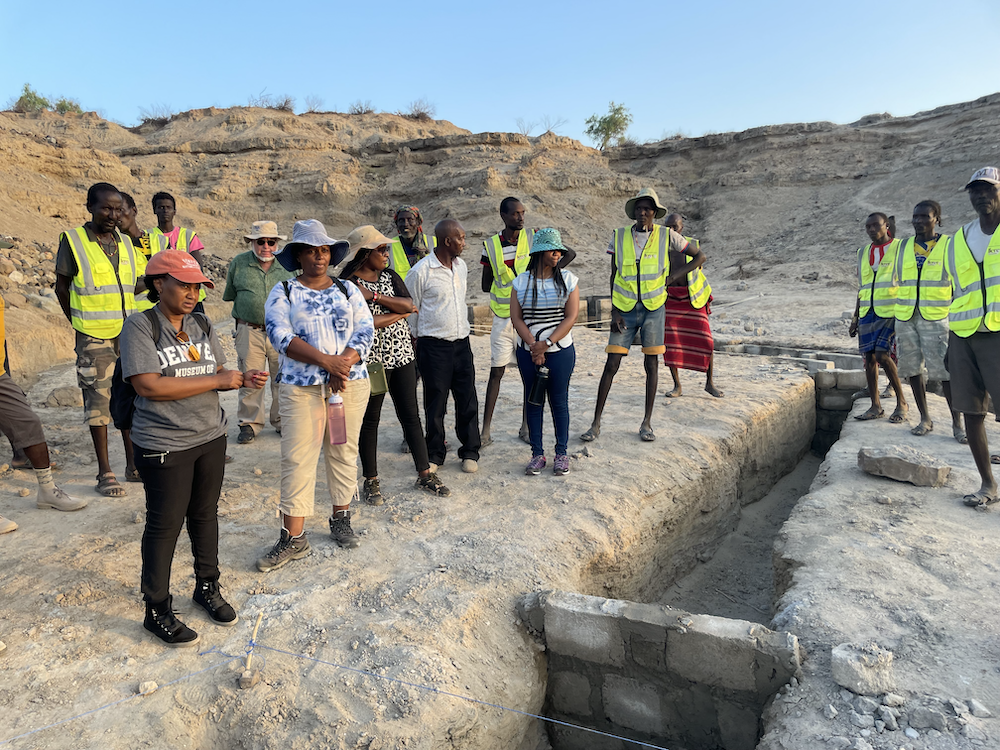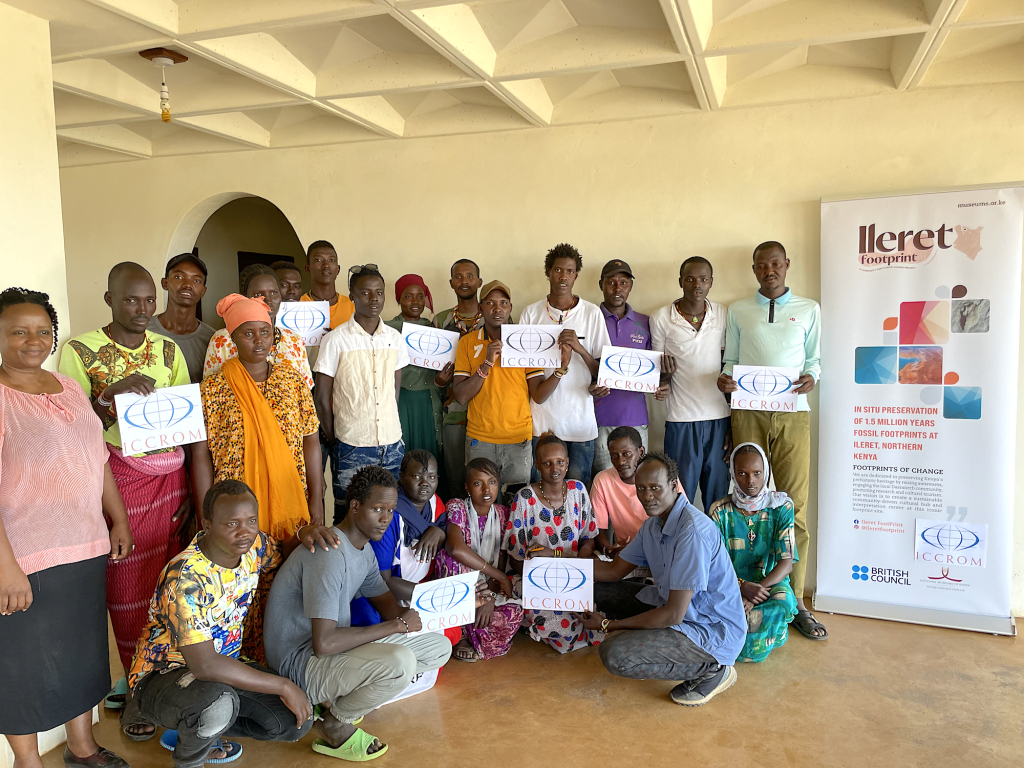In collaboration with the National Museums of Kenya and with financial contributions from the British Council Cultural Protection Fund, ICCROM is engaged in a community-centred project focused on the long-term preservation of fossil footprints that date back to approximately 1.5 million years ago. The fossil was found in Ileret, a village on the northeastern shore of Lake Turkana, Kenya.
 Image credit: ICCROM- NMK
Image credit: ICCROM- NMKThe Ileret Footprint was initially discovered by a team of local and international researchers over the course of 2004 to 2007. The fossil is a finding of a longer excavation project of the northern Kenyan region known as the “cradle of mankind.” This area boasts a wealth of archaeological, paleontological, ecological and geological evidence contributing to the study of human evolution.
The footprints found at Ileret complement these discoveries but are currently underutilized as a heritage resource and face various threats. Two major factors pose risks to this heritage resource. Climate change has caused erratic rainfall patterns, resulting in significant soil erosion over the past decade. In addition, the region has witnessed unprecedented floodwaters and prolonged droughts, exacerbating erosion.
The area is also threatened by urban sprawl. The town of Ileret is rapidly expanding, with the establishment of a local electrical grid and new schools attracting communities transitioning from a nomadic pastoralist lifestyle. The neighboring Dassanech community plays a vital role in the preservation of this heritage resource, having actively participated in its exploration, discovery and preservation. The research group has also supported the secondary education of several community members.
The project aims to not only preserve the fossil but also to engage local communities in heritage preservation and boost their livelihoods through this new opportunity for sustainable tourism.
In the last three weeks, about 50 women and youth have been trained on heritage definition, identification, typology, interpretation, and its meaning and relevance to livelihoods. A series of upcoming activities will further support local communities’ efforts. These activities are geared towards understanding the history and evolution of early hominin locomotion, mitigating the effects of climate change on cultural heritage sites, conservation, and public outreach and education in heritage. The project is fully being implemented physically in close collaboration with local communities’ leaders.
 Image credit: ICCROM- NMK
Image credit: ICCROM- NMK These capacity-building actions prioritize the identification of local solutions for climate action and protecting and promoting awareness about the Ileret Footprint. Ten proposed activities have been identified for development in supporting sustainable local communities’ solutions for effective heritage preservation and promotion. The products and results from these activities will constitute the main content for the community-driven cultural heritage hub of which complete development is expected for January 2025.
In the coming months, detailed research and documentation and in situ preservation will be undertaken. At the end of the preservation phase, the project partners plan to work with the local community to develop a cultural centre and exhibition on site.
